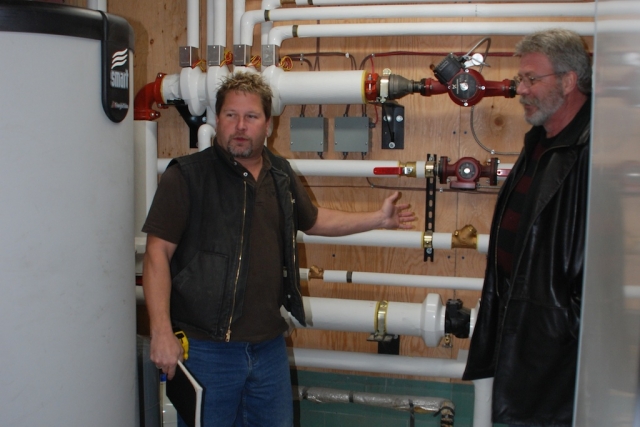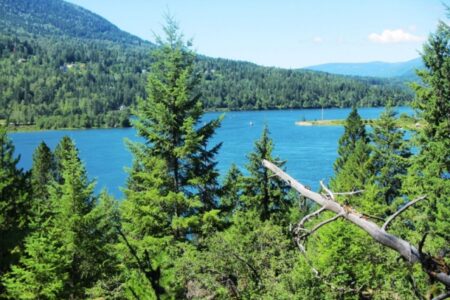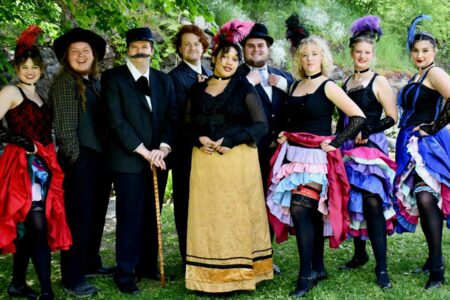No engineers required: Scalding hot showers in the arena get an inexpensive fix
Ever since renovations to the arena’s washrooms were completed in late 2010, users have complained bitterly about fickle showers that would be frigidly cold one moment and scalding hot the next, keeping athletes on their toes as they tried to clean up after skating, hockey, or roller derby.
The Telegraph met with public works manager Darrin Albo on Feb. 1 as he prepared for a final attempt to inexpensively solve the problem before resorting to more expensive options—such as calling in the cavalry and getting engineers to fully diagnose the problem in the arena’s complicated new plumbing systems.
“It better work,” he said about the complex temperature controllers he was about to install, not disguising the grief this problem has caused arena users, arena staff, and the city alike.
“It’s embarrassing,” he said. “It’s embarrassing for the guys that work there—they’re the first line that get complained to. I don’t blame people for complaining—here we spent a couple hundred grand on a heating system, and we’re getting cold showers and hot showers.”
“I’m hoping by the end of the week, we won’t be embarrassed any more, and at a fairly reasonable cost.”
And the news is good. As of Monday, Albo reported, “We finally got it looking excellent, with no complaints over the weekend. We’ll be monitoring it over the next few days, but as of now everything is working much better.”
The history of the problem goes back to the discovery of rotten, urine-soaked walls in the old washrooms during the arena renovations in 2010. The renovations had originally only targeted the roof, but when tenders came back with a cost of just over $600,000—instead of $1 million, as expected—city staff decided (controversially, without council approval) to use the leftover budget to target other upgrades in the arena, including the washrooms and mechanical systems.
The arena’s $180,000 mechanical upgrade was contracted to Rossland’s Ron Dahl under the direction of former building inspector Jason Ward. Dahl installed two big hot water holding tanks and two gas-fired boilers connected to a recirculating plumbing system with heat exchangers and three major functions: heating the dressing rooms, supplying hot water to the zamboni, and supplying the faucets and showers in the washrooms. There were no blue prints to work from, only exact diagrams from the manufacturer. Dahl also installed air exchange units in the dressing rooms.
“Problems showed up right after installation,” Albo said. “You’d get into the shower and it would be extremely hot and then it would go cold. Some teams will go in there and everything’s good. Some teams go in there and it’s either too hot or too cold.”
Jason Ward tried a few fixes to no avail before he left the city for personal reasons about four months ago, passing the task to Albo.
“In this circumstance, I don’t have an engineer to blame,” Albo explained. “Right back at beginning when the mechanical system was designed for the entire arena, it wasn’t engineered.”
“Typically you’re supposed to get an engineer to do a design. Then you go to tender. Then you install. If something goes wrong, you’re either going to blame the mechanical contractor, or blame the engineer,” Albo said. “In this case, no one is liable.”
How could a major mechanical system be installed without engineering?
“Quite easily,” Albo replied. “Jason is a competent individual. He thought, ‘Why would I pay an engineer $20,000 or $30,000 to design a system that I have a lot of history and experience with.’ That’s what I think, and that’s how Jason ran. He didn’t want to do wrong by anybody. I think he went out with the right intentions of saving the city some money doing it that way. Unfortunately it’s backfiring on me.”
“Engineering is a lot of money, 10 or 20 per cent of a project,” Albo continued. “If I felt I didn’t need it, if l felt I had the expertise and was competent in what I was doing, I would feel comfortable going ahead and doing it. On a heating system like that, no I wouldn’t, because I don’t have the background, I don’t have the knowledge. I would have engineered it, but Jason felt he had the background.”
“It’s not a manufacturing fault,” Albo said, noting that top of the line products were purchased. “The problem is how it’s installed, how many heads, what the flows are, pressure going in and going out, the pressure drop when you turn the zamboni on—there’s so many factors that come into this thing.”
“Ron [Dahl] said he did [the installation] to spec, and I believe he did,” Albo continued. “I’m not questioning him, or how he installed it. He installed it according to what he was told. But I still have this problem, so I brought him in.”
Dahl suggested two more on-demand hot water tanks be installed to supply the zamboni, cutting it out of the bigger system. The price tag would have been $18,000 to $22,000, so Albo decided to investigate first by installing a number of pressure gauges and maintaining detailed records of zamboni use to see if it corresponded with the hot-cold fluctuations in the showers.
“I had the guys monitor it, to see if it happens like that. But it doesn’t—there’s no consistency at all,” Albo said.
Dahl’s next suggestion was to look at the compressor. It uses cold water when it turns on, dropping the pressure in the water main coming in and possibly causing a fluctuation through the system, but Albo eliminated that scenario also.
“Frustrated, I phoned Dale Seymour,” Albo said. Seymour is an experienced pipe fitter. “I trust Dale’s expertise, he’s been doing it for so many years. Dale came in and did about $600 worth of check valves.”
To briefly explain the mechanics, the temperature control system has a basic mixing valve that takes incoming hot water from one side and cold water from the other, and sends the tempered water out to the showers and sinks. The mixing valve gets set and stays at that setting, regardless of the actual temperatures coming into the valve.
Seymour thought the hot water was backing up through the mixing valve into the cold water line. If this happens, some of the ‘cold water’ is actually hot, so when the taps are turned on, both supply lines are hot, leading to a scalding shower. Seymour installed check valves (one way valves) three weeks ago to see if this was going on.
It helped, but didn’t fix the problem. Albo used temperature gauges to confirm that hot water no longer backed up into the cold water supply: “The check valves are preventing that, but we’re still getting fluctuations in the showers.”
Seymour knew that the Aquatic Centre in Trail uses a “complex” temperature controller that constantly monitors the actual temperature of the supply lines and shuttles itself to maintain the desired temperature. The valve also has a recirculating pump to make sure hot water doesn’t cool as it sits overnight, so hot water comes out of taps and shower heads right away with very little wait.
A complex temperature controller was ordered, arrived last week and was installed at the end of the week. So far, so good, Albo said, with the weekend hockey players and skaters reporting great showers.
Albo said the entire repair process cost about $8000, including consultation, the valves and gauges, and installation. The complex temperature controller itself cost on the order of $4000—much less than the alternatives, such as separate hot water for the zamboni (roughly $20,000) or calling in engineers to do a full diagnosis of the mechanical system, which would have been a “big deal” and “cost a lot of money,” Albo said.
Thankfully, a relatively inexpensive fix worked. Albo said, “it wasn’t so much the cost so much as the inconvenience.”
























